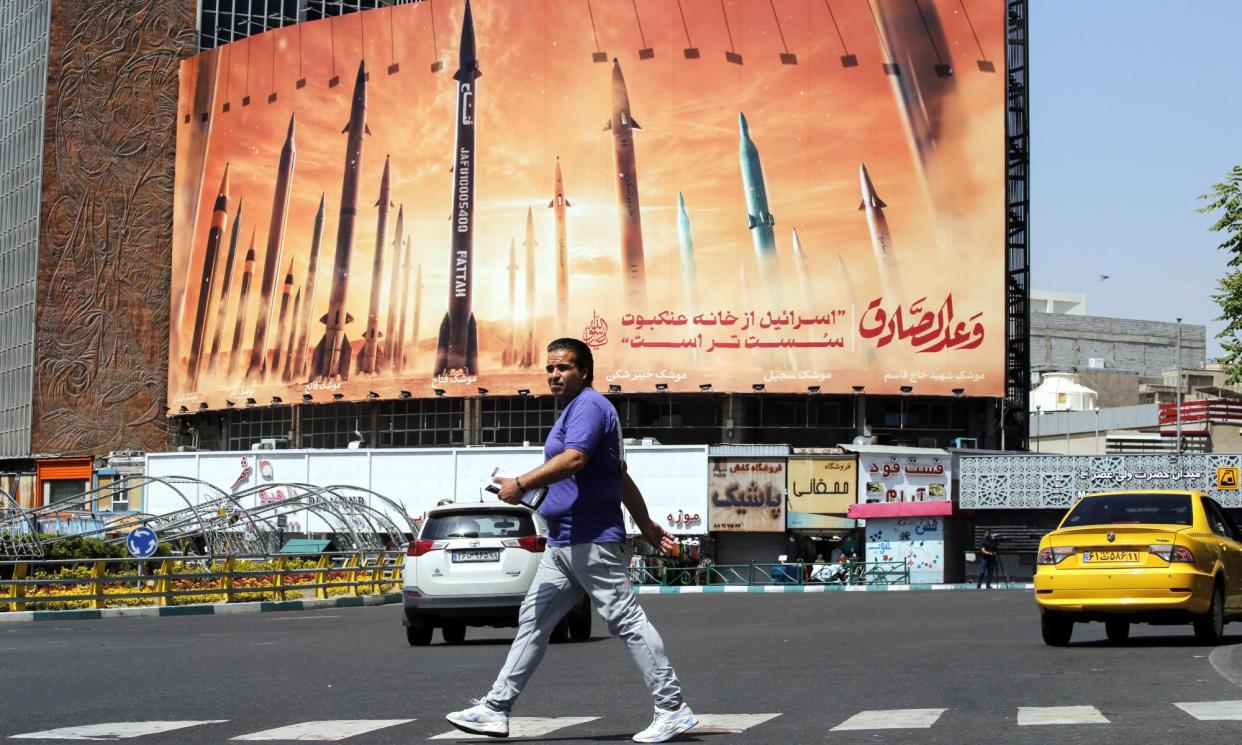Diplomacy and drones: how Israel’s reported attack on Iran unfolded

Just before dawn on Friday the explosions of air defence systems woke Iranians across the historic city of Isfahan. The breaking news alerts that followed roused people around the world, to worry that the region had moved a step closer to full-blown conflict.
There was little doubt who had launched the attack, even before any details of what happened were clear. It came just days after an unprecedented barrage of Iranian drones and missiles were aimed directly at Israel, whose government had vowed it would respond.
Despite that threat, few had expected such a rapid strike. US and Israeli officials had briefed that any action would probably come after Passover, one of the biggest holidays in the Jewish calendar, which starts on Monday.
Israel had also been under intense pressure from its closest allies to curb any response. Leaders from Washington to Paris and London, have been open about their deep concern over the speed with which a decades-long shadow war had escalated into a risky exchange of direct strikes.
Iran’s attack was retaliation for an unprecedented Israeli strike on 1 April on the country’s diplomatic complex in Damascus, which killed a top general and several other commanders, as well as several Iranian embassy staff.
Israel gave the US, its closest ally, only last-minute notice of its plans. And while Washington cleaved firmly to Israel’s defence in the face of Iranian attacks that followed, it also let Tehran know almost immediately that it had not been warned of the assassination.
For months, US diplomats had been shuttling between regional capitals in an intensive effort to prevent Israel’s war in Gaza expanding to a wider conflict. Once the immediate threat from Iran had been neutralised last weekend, the US returned to that mission.
Related: Iranian air defence systems activated as Israel launches strikes – visual guide
An Israeli war cabinet meeting called just after Iran launched its attack considered ordering an instant strike in response, the New York Times reported. A call from the US president, Joe Biden, and the success of the combined defence mission in preventing most of the salvo from reaching Israeli soil, persuaded them to hold fire in those first hours.
Ordinary Israelis woke up on Sunday morning to a country largely untouched, even by the “handful” of ballistic missiles that made it through air defences, though one girl was injured by shrapnel. Many said they hoped it would mark the end of a terrifying cycle of escalation.
Although the scale of the weekend attack had been surprising, analysts said Iran had shown some restraint by warning the US and neighbouring countries of its plans in advance, and targeting an isolated desert airbase. Its arsenal could inflict more damage if deployed differently.
Tehran had warned that any Israeli counterattack would draw stronger retaliation, with President Ebrahim Raisi saying on Wednesday that the tiniest strike would bring a “massive and harsh” response.
The countries that helped protect Israel made clear they felt the highly effective air-defence effort, and the lack of damage inside the country, gave Israel room to claim the upper hand without firing the final round of missiles in this showdown.
Biden publicly urged Israel to “take the win” on shooting down most of the drones and missiles, and the US administration said it would not join any counterstrike against Iran.
The British foreign secretary, David Cameron, made a last-minute trip to Israel with his German counterpart to make the case for restraint, urging the government to be “smart but tough”.
In Israel, however, there was little appetite for listening. After Cameron’s visit, Netanyahu said he had got “all kinds of advice” but the country would make its own decisions and do “what is necessary” to protect itself.
The Israeli military had said just hours after Iran’s attack that it had drawn up a full range of offensive and defensive options for its response. They are likely to have ranged from large-scale cyber-attacks to assassinations or undercover operations that Israel would not claim, or strikes on Iranian assets or proxies in third countries, such as Lebanon and Iraq.
The most provocative would have been an attack on Iran’s nuclear facilities. Hardliners within and outside the government argued that Iran’s attack, the impressive self-defence mission and the shift of global focus from the war in Gaza created a window of opportunity to do serious damage to Iran’s nuclear ambitions.
Technicians there have come much closer to making weapons-grade uranium since the collapse of a 2015 nuclear deal, triggered by Donald Trump’s unilateral withdrawal from the agreement. Iran denies it is seeking to produce nuclear weapons.
Friday morning revealed that Israel’s government had opted for relative restraint in the scale of its attack, but had chosen a highly symbolic and strategic target.
Isfahan is a historic cultural centre and a military hub, the base for several important facilities, including a major airbase and factories linked to drone production. The province hosts the Natanz uranium enrichment plant.
Within hours, the US confirmed the attack was an Israeli strike, and repeated its months-long call for restraint. “We’re committed to Israel’s security,” said Antony Blinken, the US secretary of state. “We’re also committed to de-escalating.”
By Friday evening, Israel had not claimed responsibility for the attack, and Iran did not acknowledge who had ordered it, with officials saying only that several drones were shot down.
That uneasy pact of silence offered the only slim hope that the latest round of dangerous attacks might have come to at least a temporary halt.

 Yahoo News
Yahoo News 
